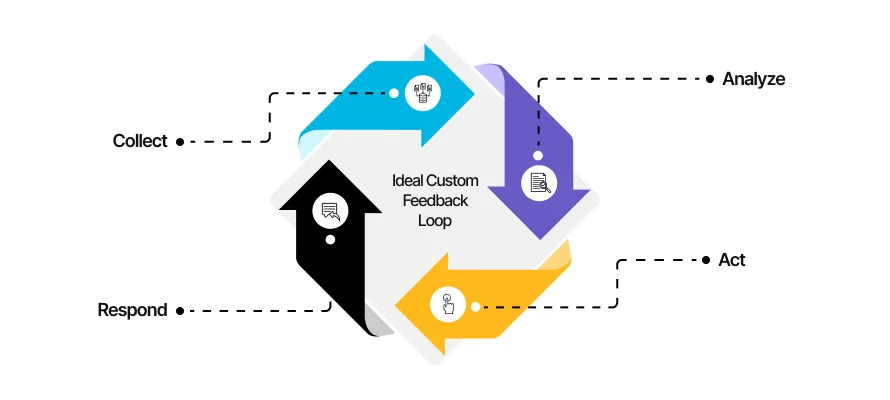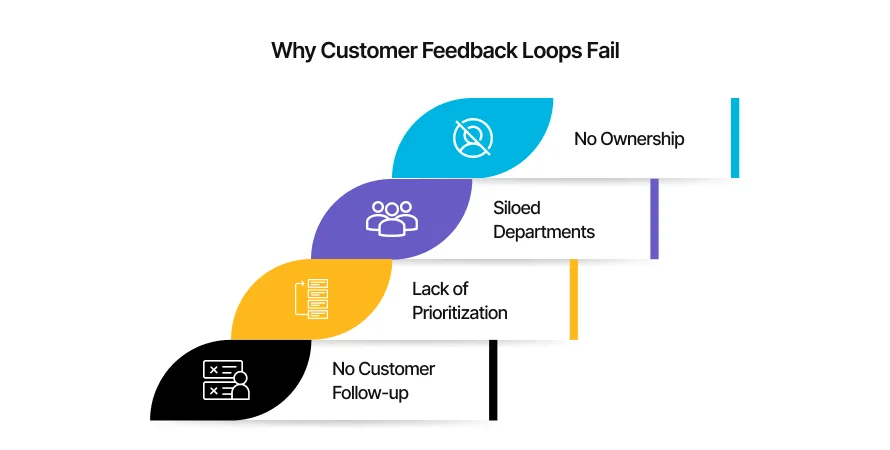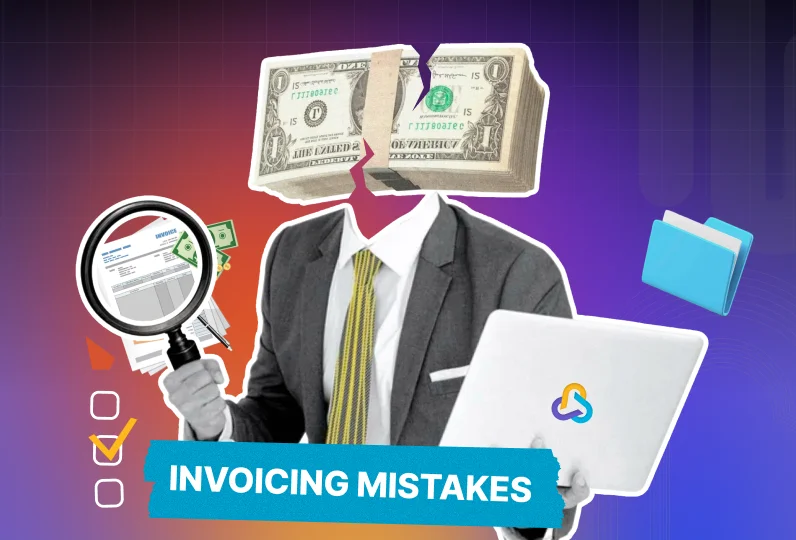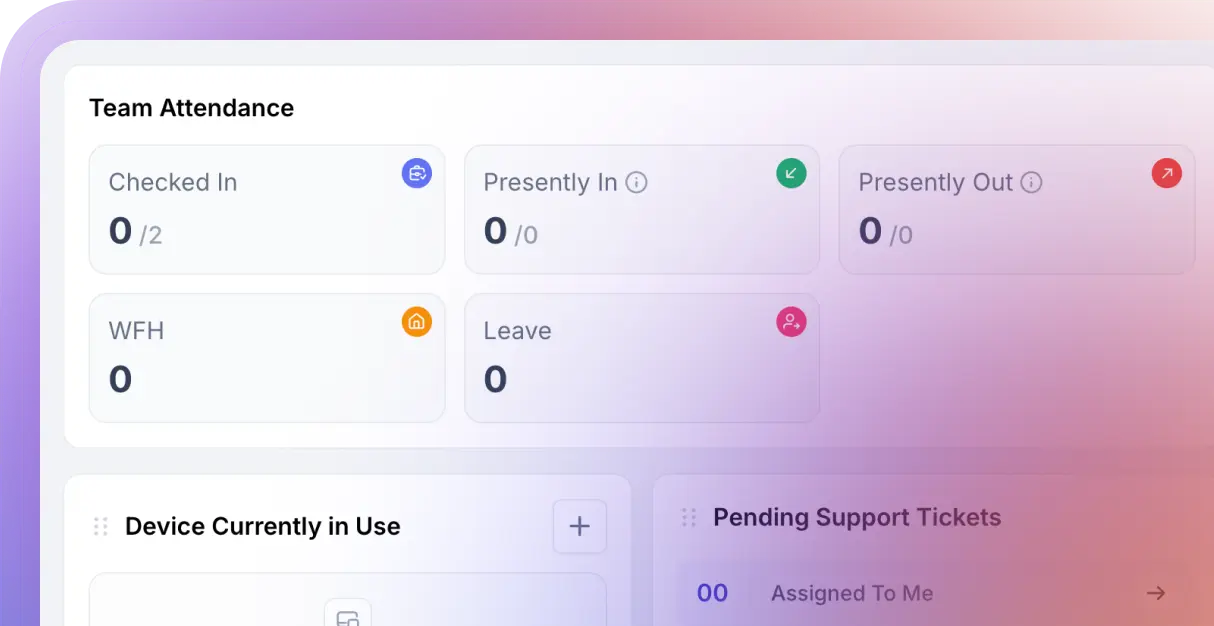You send surveys. Ask for NPS scores. Maybe even run quarterly reviews with clients. But somewhere between collection and action, that feedback gets lost or gets ignored in the worst-case scenario.
Eventually, your team ends up building features no one asked for. You miss opportunities to fix broken experiences. And slowly, the gap between what customers want and what you deliver starts to grow.
Here, the real problem is that the custom feedback is collected, but the loop is not closed appropriately. This often happens when people management and project management practices aren’t fully aligned with customer-centric goals.
A real customer feedback loop isn’t just a “suggestion box” but more like a structured way to collect, analyze, and follow up on customer insights at every stage of the journey.
In this blog, we’ll provide answers to your key questions:
- Why most feedback processes fail
- What a high-impact feedback loop looks like
- And how to build one that helps your product, team, and customers grow in sync with best practices
What Is a Customer Feedback Loop?
Call it a system or a structured process; a customer feedback loop helps you collect customers’ views, analyze those, act on them, and inform them what’s changed. Unlike conducting a random one-off survey and passively receiving complaints, this feedback loop actively leverages customer insights to improve the products, services, and overall experience in real time.
The best part of a customer feedback loop is its cyclic nature that involves collection, action, communication, and then coming back to it.

Why Most Customer Feedback Processes Fail
Most businesses think they have a feedback loop or a structured customer feedback process. But in reality, they have a suggestion box with no work management system behind it.
Here’s why most of the customer feedback processes fail:
Feedback gets collected and then ignored
You send out surveys. Ask for feedback during offer boarding. Customers respond. And then? It gets mixed with other important tasks. No follow-up, no action, no visibility, and it only stays in a spreadsheet.
No one owns it
Everyone assumes someone else is handling it. Actually, there’s no one behind it delicately, no support team, no product team, and no marketing team. Lack of clear ownership means feedback falls through the cracks.
Action is slow or inconsistent
Even if the feedback is valid, internal teams often lack the structure (or urgency) to act on it. By the time something changes, the customer who flagged it has already churned.
The loop never closes
Customers don’t hear back. They don’t know their input led to anything. So they stop sharing. You lose a powerful source of insight. It is not because they stopped caring, but because you did.

Why is the Customer Feedback Loop Important?
In today’s market, customer expectations are getting higher, and loyalty is getting thinner.
Today, switching between tools is easy. Writing a bad review takes seconds. All it takes is one poor customer experience to make another potential customer drop you from the down list.
The only companies that are surviving today are those that listen to their customers and accommodate their expectations.
Here’s why it’s important to have a real customer feedback loop in the first place:
- Buyers want to feel heard
- Product-market fit is moving and evolving too fast
- Customer feedback loop is your roadmap accelerator
- Operational alignment depends on it
Top Benefits of Building A Customer Feedback Loop
A good customer feedback loop not just makes your customers happier but also elevates your business’s reputation in the market.
If you create a customer feedback loop that’s actually ideal, it benefits you to:
- Make your products or structure your services in a way that customers actually want
- Break team silos because sales hears what support hears, and the product team sees what marketing team sees
- Spot problems and solve those early on before they become whispers, cost your deals, or damage your reputation
- Spark new ideas and inspire innovation by highlighting unmet needs and potential opportunities for growth.
- Increase customer loyalty and trust because they feel heard, valued, and respected
- Turn feedback into a competitive advantage
What are the Different Types of Customer Feedback?
Not all feedback looks the same; some is direct, some indirect, some behavioral, some solicited and some not, and many more. Treating all these different types of customer feedback as one is a big, common mistake many businesses make.
To build a feedback loop that actually delivers, you need to know what kinds of feedback you’re getting, where it’s coming from, and how to route it properly.
Here are the key types of customer feedback you should track, with examples of why to use them:
| Type | Intentional? | Source | Format | Example |
| Direct | Yes | Customer → You | Structured/Unstructured | In-app form, support chat |
| Indirect | No | Customer → Public | Unstructured | G2 reviews, Reddit threads |
| Solicited | Yes | You → Customer | Structured | NPS, CSAT survey |
| Unsolicited | No | Customer-initiated | Unstructured | Frustrated email, random praise |
| Qualitative | Varied | Any | Narrative | Interviews, support tickets |
| Quantitative | Mostly | Any | Numerical | NPS scores, usage data |
| Behavioral | No | Observed actions | Implicit | Cart abandonment |
| Inferred | No | Interpreted data | Analytical Output | Pricing page visits with no signup |
1. Direct Feedback
Direct feedback is delivered straight from the customer, explicitly and intentionally. Think of direct feedback as the kind that’s intentionally addressed to you.
Examples of how direct feedback is generally taken in:
- Customer support chats
- In-app feedback forms
- An email from the customer explaining an issue
You should take direct customer feedback to:
- Capture sentiment
- Identify pain points
- Validate decisions straight from the source
2. Indirect Feedback
This type of feedback is generally shared externally or publicly about your product, service, or brand, but not with your team.
Examples of how indirect feedback is mainly shared via:
- Online reviews (e.g., G2, Trustpilot)
- Social media mentions
- Forum discussions
- Blog comments
- Reddit threads, or more.
Indirect feedback analysis can help you:
- Monitor brand reputation
- Market sentiment
- Identify gaps in the competition
3. Solicited Feedback
Solicited feedback focuses more on how the feedback is collected. You mainly invite this feedback through forms, surveys, or outreach.
Examples of how solicited feedback is gathered include:
- Net Promoter Score (NPS) surveys
- CSAT emails after support interactions
- Feedback pop-ups during app usage
Solicited feedback can be helpful for:
- Benchmarking satisfaction
- Collecting structured data
- Capturing inputs at key journey points
4. Unsolicited Feedback
This feedback isn’t something you’ve asked for. You can instantly receive unsolicited feedback (e.g., email outreach) or an indirect manner (e.g., tweets). Just like indirect feedback, unsolicited feedback isn’t something you’ve initiated, but you get it either directly or indirectly.
Examples of unsolicited feedback include:
- A feature request in a support ticket
- Complaints in a cancellation form
- Praise or frustration sent via email or chat
Unsolicited feedback is beneficial to know:
- Surface high-intent insights
- Identify urgent issues
- Refine your roadmap based on real needs
5. Qualitative Feedback
Qualitative feedback often comes in an unstructured, narrative, and content-rich manner. You can think of comments, complaints, suggestions, and support conversations as qualitative feedback.
Qualitative feedback helps you know “why” based on customers’ opinions and experiences, interviews, observations, and open-ended questions. These have a smaller sample size, are subjective, and help to generate hypotheses or develop ideas to gain competitive advantages.
The very examples of qualitative feedback include:
- Open-ended survey responses
- Support chat logs
- Social media mentions
- Interview transcripts
- Feature requests
- Long-form support queries
Qualitative feedback will benefit you in:
- Understanding motivations, emotions, and root causes
- Prioritizing product decisions and improving experience
6. Quantitative Feedback
Quantitative feedback is measurable, structured, and number-driven. It answers “how much,” “how many,” or “how likely” questions using scales, ratings, or multiple-choice responses.
Examples of quantitative feedback include:
- Net Promoter Score (NPS)
- Customer Satisfaction (CSAT)
- Feature usage percentage
- Churn or retention rates
- Conversion and drop-off stats
Quantitative feedback will benefit you in:
- Performance tracking
- A/B testing outcomes
- Executive reporting
7. Behavioral Feedback
It is a type of feedback you can gather when analyzing the customer’s journey in your products or when engaging with your services. In this, customers’ actions (such as usage, navigation, and integration) and journey are observed. Simply put, it tells you what happened, but not always why. You can also consider it as an input.
Examples of how behavioral feedback is gathered from:
- Drop-offs during onboarding
- Low usage of key features
- Cart abandonment
- Account cancellation triggers
Behavioral feedback will help you to:
- Identify hidden friction
- Optimize user experience (UX)
- Reduce churn risk
- Catch silent dissatisfaction
8. Inferred Feedback
Inferred feedback is the insight you derive from customer behavior, without them explicitly telling you anything. It’s not directly stated, but it can be deduced through analytics, usage patterns, or interaction signals.
It’s the meaning you derive from behavioral (and other) data, which is often combined with context. This is where interpretation, algorithms, or AI come into play. Hence, it’s known as an output from analyzing multiple inputs (including behavioral, support data, timing, etc.).
Examples of inferred feedback include:
- A customer visits your pricing page multiple times but never converts.
- A user signs up, logs in once, and never returns.
- A support ticket history shows increasing frustration in tone, even if the words stay polite.
Inferred feedback will benefit you by:
- Spotting churn risk early
- Understanding feature adoption gaps
- Identifying friction points in the user journey
- Personalizing outreach and follow-ups
Key Stages of Custom Feedback Loops
Custom feedback loops mainly work in four stages, covering feedback gathering, analysis, acting upon it, and taking follow-up. Let’s have a detailed look at the key stages of customer feedback loops:
Gathering Feedback
In this stage, you listen to your customers. You can refer to various channels, including surveys, support tickets, app analytics, NPS tools, social media, and even direct conversations to collect customer feedback.
Be it solicited, unsolicited, quantitative, or qualitative data, the goal for this feedback-gathering stage is to get data that talks about the real customer experience.
Analyzing Feedback
This is the stage where you derive the meaning of the shared feedback. For this, you identify customers’ behavioral patterns, sentiments, root causes, and navigation trends in both numbers and narratives.
This analysis stage will help you know the clear message of customers regarding product issues, onboarding, pricing, or the support experience.
Acting on Feedback
This is the most critical phase in the customer feedback loop, where the majority of companies fail. Many companies gather customer insights but fail to respond to them.
At this stage, you’ll prioritize the insights based on their impact, urgency, and frequency, and assign them to the relevant teams to act upon them.
And acting does mean fixing bugs, but also providing product tweaks, improving processes, providing training, or even making policy changes.
Following Up with Customers
In this stage, you’ll close the loop. You must be thinking that you’ve already closed it by acting upon it. No, that’s not sufficient.
Post acting upon customer insights, you would want to rebuild trust, increase loyalty, and improve retention. This can also help build up credibility by communicating progress even if you have not yet resolved all the issues.
How to Collect Customer Feedback Effectively
Collecting customer feedback effectively is a task that requires you to filter out the right channels, time, and questions. Let’s have a look at a detailed process to collect customer feedback:
1. Choose the Right Feedback Channels
Each feedback channel has a different purpose to serve. So, choose the channel based on the nature of your product, customer base, and the kind of insight you need.
For example, you should use:
- Survey tools like Typeform, Google Forms, or SurveyMonkey can be used to understand customer satisfaction, gauge market trends, and evaluate product performance.
- In-app feedback widgets are a great fit for gathering contextual feedback during user interaction.
- Live chat & support tickets help to gather common complaints, confusion, or friction points.
- Emails come as a useful channel to ask for reviews, testimonials, or open-ended feedback with follow-ups.
- Social media can be helpful in monitoring mentions, hashtags, and sentiments for unsolicited feedback.
- User interviews help to derive qualitative insights in the product discovery or UX audit phase.
- Product analytics can be helpful to unspoken, behavioral feedback through analysis of clicks, drop-offs, and feature usage.
2. Ask Smart, Actionable Questions
To find the answers that lead somewhere, you need to avoid asking generic questions. So, when preparing questions, you need to be specific, clear, and aligned with your goal.
For example, your feedback questions should be of this high-quality type:
- “What was missing or confusing in this process?”
- “How likely are you to recommend us to a friend? Why?”
- “What’s one thing we could improve to better serve you?”
- “Which feature do you use most and why?”
In short, in the feedback questionnaire, you need to balance quantitative and qualitative formats to get both data and context.
3. Time It Right
Once the channels and questions are decided, you need to find the right time to send out the feedback form. Because timing plays an impactful role in determining the relevance and quality of feedback. So, you can think about asking relevant questions during the selected time.
For example:
- After onboarding, you can think about asking about first impressions, confusion points, or suggestions.
- Post-purchase, it’s relevant to ask for feedback related to satisfaction, delivery experience, or checkout ease.
- After support interactions, your feedback queries should be around to measure resolution quality and helpfulness.
- At regular intervals, it’s appropriate to conduct quarterly NPS/CSAT surveys to track evolving sentiment.
4. Keep It Frictionless
Customers don’t like to take a time out to fill out the feedback forms; they enjoy keeping it short and sweet. So, it becomes essential for you to make the feedback process easy for users. Because the harder and lengthier it is, the lower the chances are for a precise and higher response rate.
So, to keep the customer feedback process frictionless, you should:
- Use micro-surveys or emoji sliders in-app.
- Avoid long, exhausting forms
- Make it mobile-friendly
- Let users skip or decline gracefully
Once you’ve collected feedback, it’s time to acknowledge their time and effort in helping you make your products and services better.
You should let customers know that their input matters. You can do that by sending automated “Thank you” notes, sharing updates about changes made that were asked for in feedback, and rewarding useful feedback by giving discounts, shoutouts, and early access.
How to Build a Customer Feedback Loop Effectively?
To build an effective customer feedback loop from the start, you should follow a clear process, including setting up clear objectives, gathering feedback strategically, analyzing feedback, acting upon it, closing the loop, and repeating and refining the process.
Collecting feedback is easy. But what about building a loop that drives real product or service improvements? That takes intent, process, and discipline. Let’s break it down into five high-impact steps:
1. Define the Outcome You’re After
Don’t just “collect feedback.” Know why you’re doing it. For this, you should ask a specific question, like, Are you:
- Trying to reduce churn?
- Improve your onboarding?
- Following a roadmap?
If the intent is not clear, chances are you may end up with data that leads nowhere.
2. Collect Feedback from the Right Channels
Only sending emails or calling your customers and asking them questions won’t help you solve your complexities. You should follow a multi-channel feedback process, which we discussed above, to have balanced insights enough to achieve your goals. This includes:
- In-app surveys for contextual input
- NPS and CSAT for pulse checks
- Sales and support transcripts for objections and pain points
- Behavioral analytics for friction signals
- Review sites and social listening for unsolicited feedback
The key is timing. Feedback hits harder when it’s captured close to the experience.
3. Analyze It Like a Product Manager
Treat feedback like you treat user data. Look for themes, not noise.
- Group similar responses
- Tag by topic (e.g., UX, pricing, bugs)
- Quantify how often each theme appears
- Slice by user segments because what power users want is not equal to what new users need
This is where most teams fall short. They collect feedback but never operationalize it.
4. Close the Loop Internally and Externally
Acting on feedback doesn’t just mean shipping something. It means making sure people know you heard them, though:
- “We fixed this” messages in release notes or emails
- Beta test invites for suggested features
- Public changelogs or “What’s new” updates
- Customer shout-outs when feedback led to change
5. Make It a Continuous System
A feedback loop works in a circular manner continuously, and it should, as it helps improve your products or services. So, you should:
- Re-survey to measure improvements
- Update your process as customer behavior evolves
- Track what feedback led to the most impact
- Look for patterns over time, not just spikes
- Automate where possible (trigger surveys, tag themes, route insights)
When done right, your feedback loop becomes a self-sustaining growth engine, not a suggestion box collecting dust.
Best Practices for a Successful Customer Feedback Loop Strategy
Building a feedback loop is one thing. And making it drive real impact across your business is a whole different race. That is where the real work begins. Below, we have mentioned proven best practices to keep your loop actionable, scalable, and aligned with growth:
- Managing customer feedback is not the responsibility of the CX team only; product, marketing, sales, and support teams should also take responsibility.
- Don’t just chase NPS scope, but also go for feedback that tells you why to avoid blind spots.
- Segment feedback by user type because enterprise clients, early adopters, and long-time users don’t all want the same thing.
- Don’t just collect the feedback; also circle back to them, make them feel heard, and show them the outcome.
- Automate feedback responses without losing the human touch.
- Use the feedback loop as a strategic asset to mine product roadmap decisions, market positioning, churn and retention insights, and customer advocacy opportunities.
Enforce Positive and Proactive Customers Experience with CollabCRM
Customer feedback loops don’t work unless your team can actually act on the feedback. That’s the real gap. Most businesses have gathered plenty of data but have not taken any action. So, if you want to close that loop and drive business growth, you need the right system to operationalize the entire loop.
That’s where CollabCRM, as a work management software, comes in.
It’s built to make collaboration sharper, feedback smarter, and decisions faster. In CollabCRM, business development teams can add contextual feedback to lost leads to give the team visibility into why deals fail and what to do about it. That’s a blind spot most CRMs completely ignore.
From intuitive visual dashboards to breakdowns by stage, source, and territory, CollabCRM gives teams the insight they need to act rather than guess. Whether you’re tracking lead outcomes, measuring conversion drop-offs, or identifying top-performing owners, every data point helps your feedback loop work harder.
FAQs on Customer Feedback Loop
Think of a feedback system as the entire framework that captures, processes, and manages customer feedback. A feedback loop is the closed cycle that ensures feedback doesn’t just sit in a spreadsheet; it’s acted upon and followed up.
You can acknowledge the feedback, analyze it for patterns or urgency, act on what’s feasible, and follow up with the customer to close the customer feedback loop.
Collect, analyze, act, and close the loop: these are the four main components of a feedback loop.





